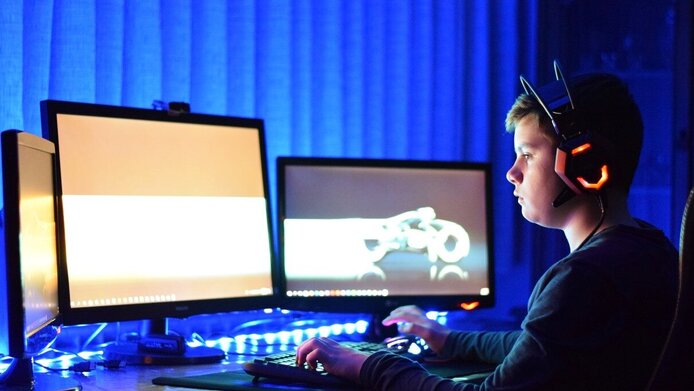Escaping the (mental) echo chamber

Most people find it quite difficult to change their habitual way of thinking, since our brain usually links new input to prior knowledge (context). Using a box as a container seems logical, but who would come up with the idea of using it as a candle holder? - The "candle problem" is a test devised by the German Gestalt psychologist Karl Duncker (1903-1940), who coined the concept of "functional fixation". Solving complex problems requires creative thinking, as Duncker's experiment demonstrated nearly a century ago. But how can entrenched trains of thought change course and what distinguishes creative people from conventional thinkers? An interdisciplinary team from the Cognitive Science research platform in Graz has tackled this question. On the basis of mathematical models of memory search, the researchers have investigated the mechanisms of creative thinking. More specifically, the team was interested in the role played by web-based context in overcoming mental fixations. As the psychologist Dietrich Albert explains, the Internet increasingly requires an ability for creative thinking in professional life. Accordingly, anyone who searches the web for information must be able to research, filter and evaluate information and ultimately integrate it in their own cognitive context. The Internet steers our thoughts in certain directions, however, for example through personalized search results, advertising or fake news. There has been little research to date into how this interplay of cognitive performance and interaction with digital media functions, which is where this basic research project under the lead of Dietrich Albert and funded by the Austrian Science Fund FWF comes in.
Computer models simulate creative thinking
The interdisciplinary team from the fields of psychology, mathematics and computer science used computer models to analyse the results of laboratory experiments in which test persons were asked to form mental association chains. This combination of content and mental images was then represented in the model by a so-called semantic gradient. The gradient indicates the path taken by a person’s mental search process. People who think creatively move off more quickly from the starting point, i.e. their gradient drops more sharply. When we think and form associations, two levels of consciousness – context and language – work together and evoke internal images. “This results in a mental amalgamation, and the denser this is, the easier it is to search for a creative verbal idea,” explains project team member Paul Seitlinger. It turned out that creative people can use their “mental searchlight” more flexibly to condense semantically diverse images. They traverse the internal semantic space more quickly and consequently come up with new ideas more easily. The computer models of the Graz-based team match the results of the experiments. This allows the researchers to develop estimated values for parameters on the basis of which one can determine the relative strength of thought processes as between more or less creative persons.
Evaluating the quality of information is difficult
Building on this, the Graz researchers have investigated how bookmarking systems affect the search for information on the Internet as part of a Citizen Science project. In cooperation with schools, use was made of worksheets based on the latest scientific work of the Stanford History Education Group to determine the pupils' ability to critically review online information. “Evaluating the quality of information causes many problems. Processing and discussing these information examples is designed above all to make the pupils aware of the difficulties arising when evaluating information,” reports Simone Kopeinik, a research assistant and computer scientist. As it turned out, the distinction between editorial content and advertising (native advertising) and the evaluation of user comments was one of the biggest challenges - also for parents, by the way, who were partly involved in the project.
Recommendations influence the search
After creating awareness in the classroom about differences in content, the research team simulated the influence of algorithms on a dedicated online platform to which the pupils had uploaded information. On the platform, the pupils received recommended keywords based on their own data or those of the whole class; there was also an area without recommendations. The researchers found that history-based personalisation reinforces existing patterns of behaviour, whereas an environment without personalised recommendations favours explorative information seeking. The results suggest that “unfiltered” information is conducive to getting out of one's own echo chamber by drawing on a greater variety of resources.
Promoting creativity and digital literacy
Whether or not using the web is conducive to creativity and problem solving depends on the interaction between external input – “the Internet” in this case – and the users' ability to think, explains Paul Seitlinger. “Executive functions that play an important role in searching, filtering or combining information are closely related to intelligence,” notes the psychologist. The good news is that the brain can be trained, “the earlier you start, the better,” confirms Seitlinger.
Personal details The psychologist Dietrich Albert studied in Vienna and Göttingen; after obtaining his postgraduate qualification at the University of Marburg/Lahn, he was Professor of Experimental Psychology at the University of Heidelberg before being appointed Professor of General Psychology at the University of Graz. Albert is currently doing research at the Graz University of Technology and explores processes of knowledge creation, competence and web-based information retrieval. Simone Kopeinik is a computer scientist and holds a postdoc position at the Know-Center in Graz. Her main research focus is the acquisition of digital skills in teaching, particularly in connection with computer games and e-learning applications. Paul Seitlinger is a psychologist and is currently working as a postdoctoral fellow in an international research project at the School of Educational Sciences at the University of Tallinn (Estonia). He is interested in mathematical models with a focus on creative cognition and social interaction in learning.
Publications and contributions





